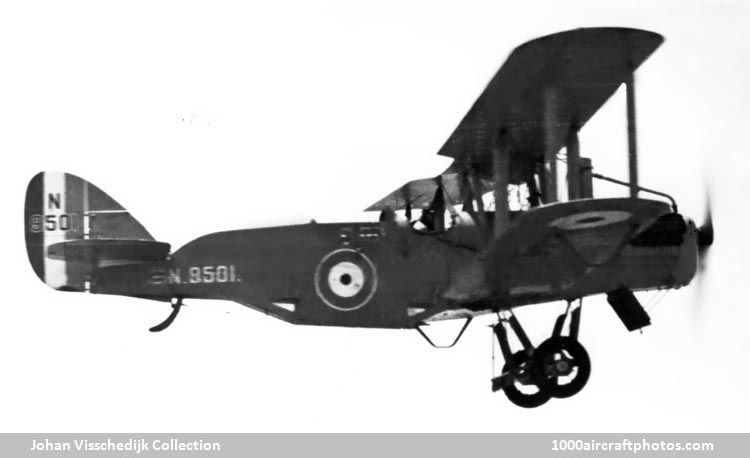01/31/2009. Remarks by Johan Visschedijk: "The Walrus was the outcome of an Air Ministry plan to effect financial economies in the lean 'twenties' by adapting the RAF's de Havilland D.H.9A day bomber into a three-seat carrier-borne spotter-reconnaissance aircraft. The first stage in this transformation was the alteration of the fuselage to accommodate an observer in a third cockpit, behind the gunner, and a large ventral bulge was added to provide the observer with a prone position. This prototype (J6585) was produced by Armstrong Whitworth and was known as the Tadpole: it differed from the production Walrus in retaining the original 400 hp Liberty engine with frontal radiator.
The 36 production aircraft, N9500 to N9535, all built by Westland, were fitted with the 450 hp Napier Lion II engine and additional modifications included detachable wings, emergency flotation bags, a jettisonable landing gear fitted with a hydrovane, jaws on the spreader bars to engage fore-and-aft arrester wires and an arrangement to convert the fuel-tank, if required, into an additional flotation chamber. In both the Tadpole and the Walrus the original stagger of the D.H.9As wings was heavily reduced, and the final result was the aircraft handled extremely badly. All production aircraft were fitted with horn-balanced ailerons and an oleo landing gear.
The Walrus first entered service with RAF No. 3 Squadron, at Leuchars in 1921, being superseded by the Avro Bison when the squadron moved to Gosport in 1922. In 1923 the Walrus joined Nos. 420 and 421 Fleet Spotter Flights, each of which had six aircraft at Gosport. At the end of 1925 No. 420 Flight re-equipped with Blackburn Blackburns and No. 421 Flight with Avro Bisons."
